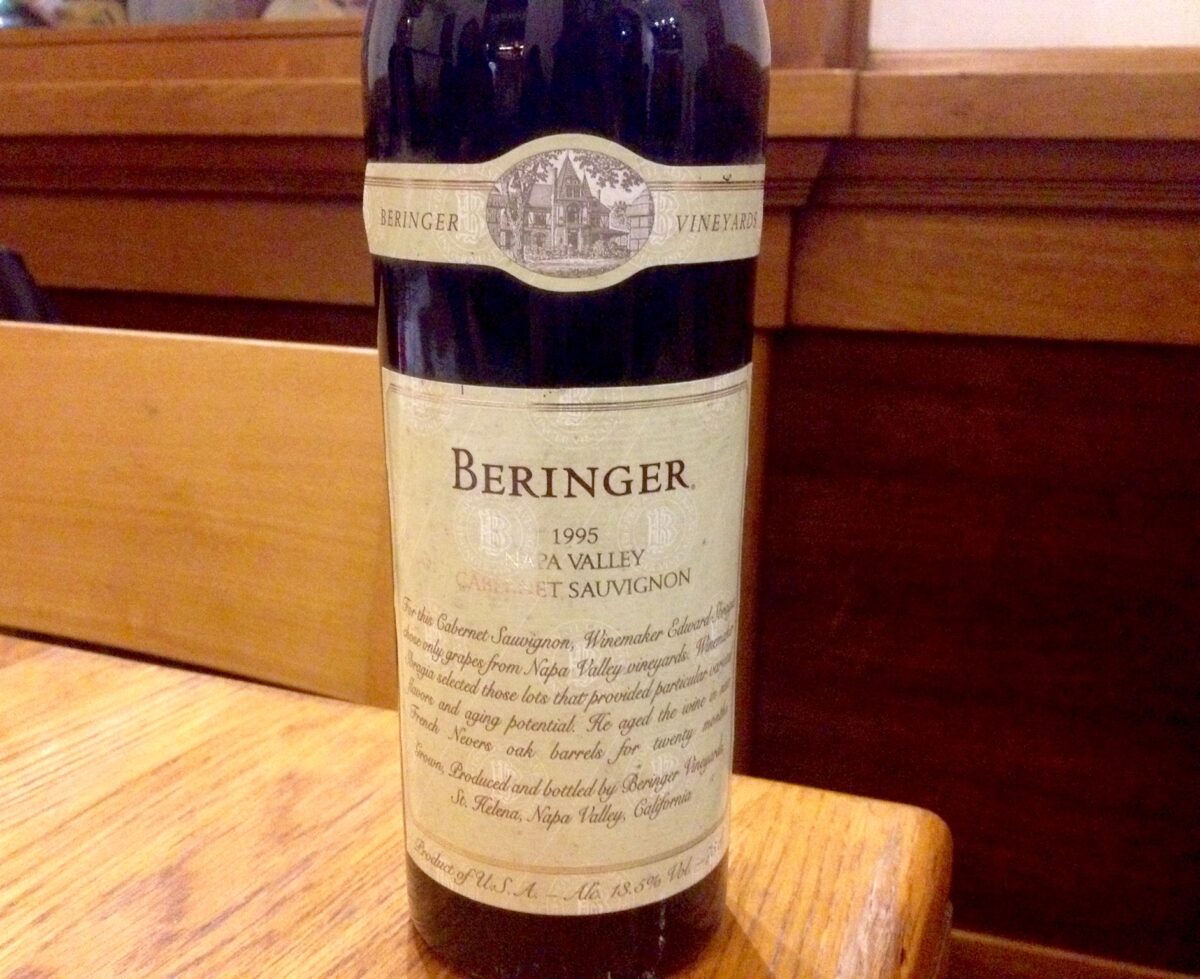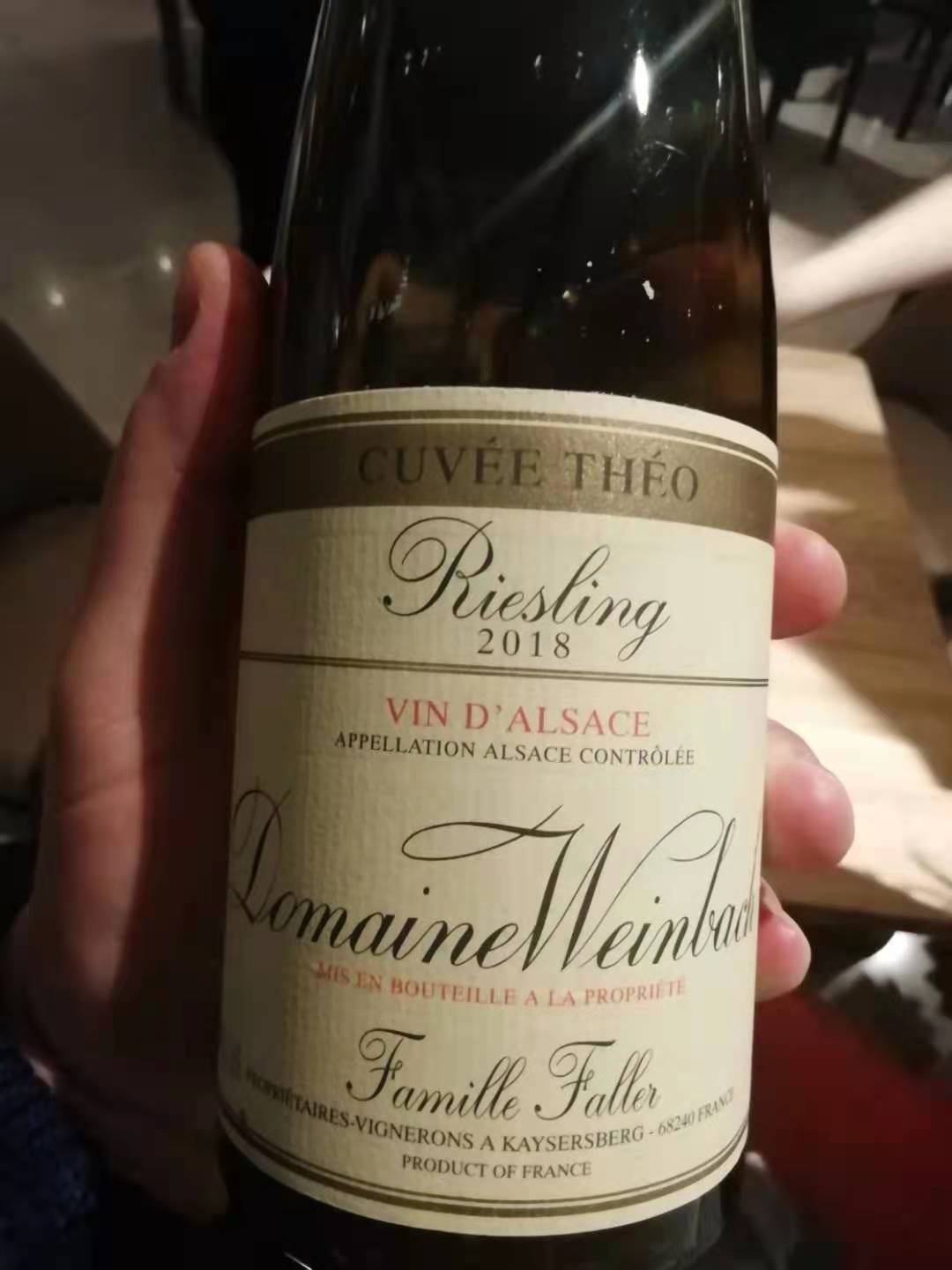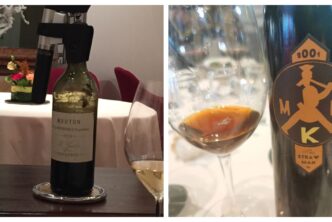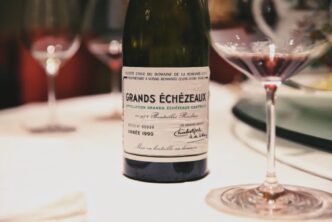Beringer 1995 Cabernet Sauvignon Private Reserve 95
Beringer was officially founded in 1869, but its history was really set into motion the year before, in 1868, when Jacob Beringer washed upon US shores from his native Mainz, Germany (itself a very famous wine production area). From New York he moved to Napa Valley, where he became cellar foreman for Charles Krug, one of the first commercial winemakers in Napa Valley. After a few years of holding down the fort there, in 1875 he and his brother Frederick purchased roughly 87 hectares (215 acres) in St.Helena located right next door to Charles Krug in St. Helena, a plot of land known appropriately enough as Los Hermanos (the brothers), and that became the heart of the Beringer estate.
It was just a little while later that I first visited Beringer (tongue firmly planted in cheek as I write that), say in 1990 or so, and though the place has changed quite a bit since my first time there, the cardinal tenets about this wine estate remain true to this day. Simply put, Beringer is one of the truly great names in wine, and not just American wine. It embodies all the qualities of the world’s greatest wine estates: top vineyards, beautiful grounds, winery and other buildings on the property of historical and architectural value (the 1884 Rhine House, a creation of architect Albert Schroepfer; the Hudson House; not surprisingly and quite correctly, in 1967, Beringer was named a National Historic Landmark), a collection of some of the most talented winemakers in the history of their wine region (in fact, only eight of them in 143 hallowed years), and a litany of great wines that have long been benchmarks for their varieties and quality categories.
The winemaker today is Mark Beringer, a direct descendant of Beringer’s first winemaker (Mark is the great-great-grandson of Beringer Vineyards’ founder Jacob Beringer), only one of eight winemakers this iconic Napa Valley wine address has ever known (he follows on the heels of former chief winemaker Laurie Hook). It is safe to say that the winery will go from strength to strength in the passage, as the estate has had an amazing run of super talented people helping to craft its wines. One such individual is Ed Sbragia, who made the Beringer 1995 Cabernet Sauvignon Private Reserve that is one of the two wines featured in this week’s Wines of the Week column in TerroirSense Wine Review.
Sbragia’s destiny was to be a scientist, and in fact he majored in chemistry from the University of California at Davis, but he wished to be a winemaker getting his hands dirty in the thick of the action more so than a lab rat (I use that latter descriptor with the utmost reverence, as I was myself, for the longest time, just that, a very proud lab rat). After hitting the books at the California State University at Fresno and earning a master’s degree in enology and a year’s stint working at a Sonoma County winery, he became the assistant of Beringer’s famous winemaker Myron Nightingale. It his during his tenure that some of Beringer’s most famous much awarded wines saw the light of day.

There were roughly 18,000 cases of the Beringer 1995 Cabernet Sauvignon Private Reserve produced. A blend of 97% Cabernet Sauvignon and 3% Cabernet Franc harvested between October 9 to November 16, the fruit was sourced from mostly three fantastic vineyard sites: Bancroft Ranch (34%), Tre Colline (36%), and Chabot (19%), with the balance coming from the St. Helena Home Vineyard. The 1995 wine, at a not exactly shy 13.98% alcohol (I say what the heck, let’s live on the edge and just say it has 14% alcohol, OK?), it showcases all that is great about Beringer and truly great Napa Valley Cabernet Sauvignon when winemakers did not allow the (bad) fads of the various times to guide their worst instincts. And so, very happily, this is neither overripe nor jammy, and does not induce the horrible palate fatigue that has me (and many other like me) looking around for a potted plant in which to chuck the glass contents after the first sip. Still fairly opaque ruby-purple in colour with a beginning of a garnet rim, this beautifully balanced wine offers aromas and flavours of blackberry jelly and cassis, complemented by Oriental spices and cedar, not to mention lovely nuances of olive paste, brown spices, tobacco and dark plums on the still nicely vibrant and, believe it or not, still youthful mouthfeel. The finish is long and smooth, and while not the most complex Private Reserve Cab Sauv wine ever made at Beringer, it showcases well what Napa can give when its wines are not allowed to turn into truly undrinkable over the top vinous caricatures. While everyone at the time clamored for the Napa wines of the undoubtedly spectacular 1992 and 1994 vintages, I find that many 1995s have matured spectacularly well. This beauty is a case in point. In fact, I wish I still had a case of it, but my wayward younger days culpably pushed me not to defer immediate gratification any further. Drinking window: now-2030.
2018 Domaine Weinbach Riesling Cuvée Théo 92
Domaine Weinbach is, for a slew of reasons, one of the world’s thirty or so best and most famous wine estates. In fact, I wouldn’t even know where to begin praising the estate for all it’s done for Alsace and wine, though of course I could start with how happy its wines have made my taste buds and tummy happy over the years, which is in my not so humble view more than reason enough to sing the winery’s praises to high heavens.
All kidding aside, there are few wineries anywhere in the world (all told, a dozen, maybe?) that is so amazingly talented with just about any grape variety it touches. Riesling, Gewurztraminer, Sylvaner, the Muscats, Pinot Gris, Pinot Blanc and Pinot Noir: from each one, the Faller family (mom Catherine and sons Théo and Edy Leiber-Faller, ably helped out by Ghislain Berthiot, the estate’s longtime assistant winemaker) make wines that are at the top or close to the top of the region’s quality heap. You only need to taste some of the stuff coming out of Alsace’s unfortunately much politically protected social coops (with few exceptions, mostly undrinkable stuff for anyone who is seriously into wine) to understand immediately the quality chasm that exists in Alsace wine today.
Domaine Weinbach is not just one of the world’s best and most famous wine estates, but also also one of the its prettiest wineries. It was originally a monastery of the Order Friars Minor Capuchins, or Capuchins for short, established in 1612 (and no, though I am not so arguably the world’s number one Alsace wine lover and the English-language wine writer who has most written about its wines in-depth over the last ten years, I did not go tasting there that year). The word “capuchin” refers to the cowled cap these friars wear, and in case you never thought of it, that is precisely where one of the world’s five or so favourite drinks gets its name: the Cappuccino, or that coffee and milk creation where the foamy milk cap in your cup is highly reminiscent of the Capuchin order’s cowl). Current owner Catherine Faller’s grandfather bought the estate in 1898, after the French Revolution brought it about government ownership. The Faller family built it up from the original five hectares of vineyards to the reality it is today in great part to Cathy’s father Théo (who died in 1979) after whom the wine in today’s TerroirSense Wine Review “Wines of the Week” column is named after. The estate has been farmed biodynamically since 1998 and was Demeter/Ecocert certified in 2010.

The 2018 Domaine Weinbach Riesling Cuvée Théo is the estate’s entry level Riesling if you like, and it’s one of the best young versions of this wine I have ever tasted at a similar stage of development. Acid-driven but balanced, it embodies everything I and we all love about Alsace; it is mostly made with fruit from the estate’s monopole vineyard of the Clos des Capucins located right in front of the beautiful villa that doubels as winery and family home. Pale straw-green with golden tinges, this boasts very pretty aromas of lime, green apple, beeswax, and musky floral tones all complicated by hints of minerals. Then similar flavours to the aromas on the bright, fresh, precise palate which is beautifully focused, energetic and long. Fermented with wild yeasts and aged in very old oak foudres, this is about as good a Riesling money can buy at this price point. Very, very well done. Drinking window: now-2027.

 English
English

